9 books about Cortazzi, Hugh
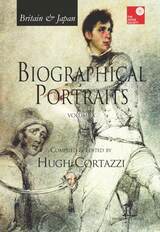
Britain and Japan
Biographical Portraits
Hugh Cortazzi
Amsterdam University Press, 2016
This tenth volume in the series, comprising some fifty essays, offers a further wide-ranging selection of essays on different themes and personalities, grouped thematically, from portraits of key figures such as Stamford Raffles and Lord Lytton to the history of Japanese trade and investment in the UK, such as NSK at Peterlee and Mitsubishi Electric in Scotland, from scholars such as Basil Hall Chamberlain, to international Japanese banker Ogata Shijuro.
[more]

Britain and Japan
Biographical Portraits
Hugh Cortazzi
Amsterdam University Press, 2015
Published in association with the Japan Society and containing 57 essays, this ninth volume in the series continues to celebrate the life and work of the men and women, both British and Japanese, who over time played an interesting and significant role in a wide variety of different spheres relating to the history of Anglo-Japanese relations and deserve to be recorded and remembered. Read together they give a picture, even if inevitably a partial one, of important facets of modern history and Anglo-Japanese institutions. They shed light on a number of controversial issues as well as illuminate past successes and failures. Structured thematically in four Parts – Japan in Britain, Britain in Japan, Scholars and Writers, Politicians and Officials – the highlights in this volume include: The Great Japan Exhibition, 1981-82; Japanese Gardens and the Japanese Garden Society in the UK; Cricket in Late Edo and Meiji Japan; Norman Macrae, pioneering journalist of The Economist; Arthur Balfour – managing the emergence of Japan as a Great Power; Michio Morishima, an economist ‘made in Japan’; Margaret Thatcher – a pragmatist who radically improved Britain’s image in Japan.
[more]
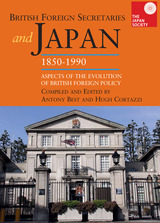
British Foreign Secretaries and Japan, 1850-1990
Aspects of the Evolution of British Foreign Policy
Anthony Best
Amsterdam University Press, 2018
This book reviews the role of British Foreign Secretaries in the formulation of British policy towards Japan from the re-opening of Japan in the middle of the nineteenth century to the end of the twentieth century. It also takes a critical look at the history of British relations with Japan over these years. Beginning with Lord John Russell (Foreign Secretary 1859-1865) and concluding with Geoffrey Howe (Secretary of State for Foreign & Commonwealth Affairs, 1983-1989), the volume also examines the critical roles of two British Prime Ministers in the latter part of the twentieth century, Edward Heath and Margaret Thatcher, who ensured that Britain recognized both the reality and the opportunities for Britain resulting from the Japanese economic and industrial phenomenon. Heath’s main emphasis was on opening the Japanese market to British exports. Thatcher’s was on Japanese investment. This volume is a valuable addition to the Japan Society’s series devoted to aspects of Anglo-Japanese relations which includes ten volumes of Britain & Japan: Biographical Portraits as well as British Envoys in Japan.
[more]
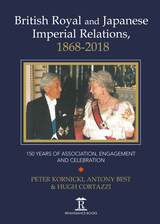
British Royal and Japanese Imperial Relations, 1868-2018
150 Years of Association, Engagement and Celebration
Peter Kornicki
Amsterdam University Press, 2019
This new scholarly study examines the history of the relations between the British and Japanese monarchies over the past 150 years. Complemented by a significant plate section which includes a number of rarely seen images, as well as a chronology of royal/imperial visits and extensive bibliography, British Royal and Japanese Imperial Relations, 1868-2018, will become a benchmark reference on the subject. The volume is divided into three sections. Part I, by Peter Kornicki, examines the ‘royals and imperials’ history during the Meiji era; Part II, by Antony Best, examines the first half of the twentieth century; Part III, by Sir Hugh Cortazzi, focuses on the post-war history up to the present day. Published in association with the Japan Society, its appearance marks the abdication of Emperor Akihito and the enthronement of Crown Prince Naruhito in May 2019. It is also a memorial volume to the late Sir Hugh Cortazzi who died in August 2018, shortly after completing his own contribution to the volume.
[more]
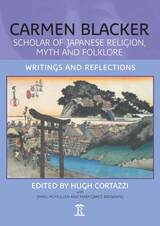
Carmen Blacker
Scholar of Japanese Religion, Myth and Folklore: Writings and Reflections
Hugh Cortazzi
Amsterdam University Press, 2017
Carmen Blacker was an outstanding scholar of Japanese culture, known internationally for her writings on religion, myth and folklore – her most notable work being The Catalpa Bow: A Study of Shamanistic Practices in Japan. Importantly, a third of the volume comprises significant extracts from the author’s diaries covering a period of more than forty years, together with a plate section drawn from her extensive photographic archive, thus providing a rare opportunity to gain a personal insight into the author’s life and work. The volume includes a wide selection of writings from distinguished scholars such as Donald Keene and her former pupil Peter Kornicki in celebration of her work and legacy, together with various essays and papers by Carmen Blacker herself that have hitherto not been widely available. In addition to her scholarship, Carmen Blacker was also highly regarded for her work in promoting Japanese Studies at Cambridge and played a vital role in helping to re-establish The Japan Society, London, post-war.
[more]

Georges Bigot and Japan, 1882-1899
Satirist, Illustrator and Artist Extraordinaire
Christian Polak
Amsterdam University Press, 2018
Incorporating over 250 illustrations, this is the first comprehensive study in English of French artist and caricaturist George Ferdinand Bigot (1860-1927) who, during the last two decades of the nineteenth century, was renowned in Japan but barely known in his own country. Even today, examples of his cartoons appear in Japanese school textbooks. Inspired by what he saw of Japanese culture and way of life at the Paris Exposition Universelle in 1878, Bigot managed to find his way to Japan in 1882 and immediately set about developing his career as an artist working in pen and ink, watercolours and oils. He also quickly exploited his talent as a highly skilled sketch artist and cartoonist. His output was prodigious and included regular commissions from The Graphic and various Japanese as well as French journals. He left Japan in 1899, never to return. The volume includes a full introduction of the life, work and artistry of Bigot by Christian Polak, together with an essay by Hugh Cortazzi on Charles Wirgman, publisher of Japan Punch. Wirgman was Bigot’s ‘predecessor’ and friend (he launched his own satirical magazine Tôbaé in 1887, the year Japan Punch closed). Georges Bigot and Japan also makes a valuable contribution to Meiji Studies and the history of both Franco- and Anglo-Japanese relations, as well as the role of art in modern international relations.
[more]
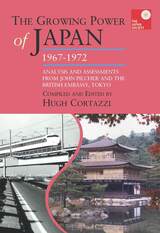
The Growing Power of Japan, 1967-1972
Analysis and Assessments from John Pilcher and the British Embassy, Tokyo
Hugh Cortazzi
Amsterdam University Press, 2015
John Pilcher’s appointment as HM Ambassador to Japan in 1967, three years after the widely acclaimed Tokyo Olympics, was both judicious and enlightened. His role was to be that of a bridge-builder between Japan and Britain following the early post-war years of disenchantment, distrust and detachment that had earlier marked the relationship between the two countries. He brought to his role a particular understanding of Japanese civilization and a critical analysis of Japanese attitudes and way of life. Before the war he had had the good fortune to spend time as a language student in Kyoto. There he came to appreciate Japanese culture at its best but as a junior consular official he also came to see other less attractive aspects of Japan. In this volume Sir Hugh Cortazzi who was to follow in John Pilcher’s footsteps, has compiled the defining reports to Whitehall from Pilcher’s time and as such they offer a valuable record of Japan’s progress at this important point in her post-war history, as well as providing unique insights into the activities, hopes and expectations of the British government in her dealings with Japan. The collection (including essays and writings from his private papers) which has hitherto remained largely unknown or inaccessible to most researchers, provides a platform for John Pilcher as a writer and distinguished scholar-diplomat.
[more]
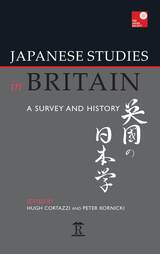
Japanese Studies in Britain
A Survey and History
Hugh Cortazzi
Amsterdam University Press, 2016
This book takes an in-depth look at the study of Japan in contemporary Britain, highlighting the many strengths but also pointing out some weaknesses, while at the same time offering a valuable historical record of the origins and development of Japanese Studies in British universities and other institutions. It comprises essays written by scholars from universities all over Britain – from Edinburgh and Newcastle to Cardiff, SOAS and Oxbridge+, as well as contributions from various supporting foundations and organizations – from the British Association of Japanese Studies (BAJS) to the Sainsbury Institute for the Study of Japanese Arts and Cultures (SISJAC). It opens with an historical overview by Peter Kornicki, followed by chapters on the important role of missionaries in advancing Japanese language studies in pre-war Japan by Hamish Ion and the contribution of the British consular and military officers before 1941 by Jim Hoare. Japanese Studies in Britain gives a snapshot of the present state of Japanese Studies in Britain. It also provides an important new benchmark and point of reference regarding the present options for studying Japan at British universities. It offers in addition a wider perspective on the role, relevance and future direction of Japanese Studies for academia, business and government, students planning their future careers and more generally the world of education, as well as readers interested in the developing relationship between Britain and Japan.
[more]

The Thames and I
A Memoir by Prince Naruhito of Two Years at Oxford
Hugh Naruhito
Amsterdam University Press, 2019
Prior to becoming Crown Prince of Japan in 1989, following the death of his grandfather Emperor Showa, Prince Naruhito studied at Merton College, Oxford, from June 1983 to October 1985. His research topic was the River Thames as a commercial highway in the eighteenth century. This marked the first time that anyone in direct succession to the throne had ever studied outside Japan. In 1992, he published a record of his time at Oxford under the title Thames no tomo ni . The memoir, which includes a colour plate section incorporating photographs taken by the Prince, explores his daily life, studies and recreational experiences, including discovering beer and being banned from entering a disco because he was wearing jeans. The Thames and I is a remarkable record, not least because of its candour, but equally because it reveals the Crown Prince as an individual, including his personal charm and sense of humour. It will be of special interest to those wishing to know more about the future emperor of Japan.
[more]
READERS
Browse our collection.
PUBLISHERS
See BiblioVault's publisher services.
STUDENT SERVICES
Files for college accessibility offices.
UChicago Accessibility Resources
home | accessibility | search | about | contact us
BiblioVault ® 2001 - 2025
The University of Chicago Press









